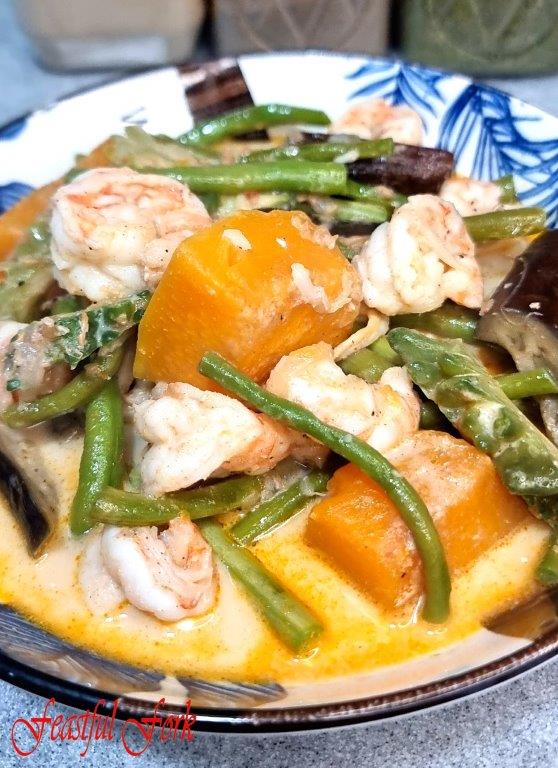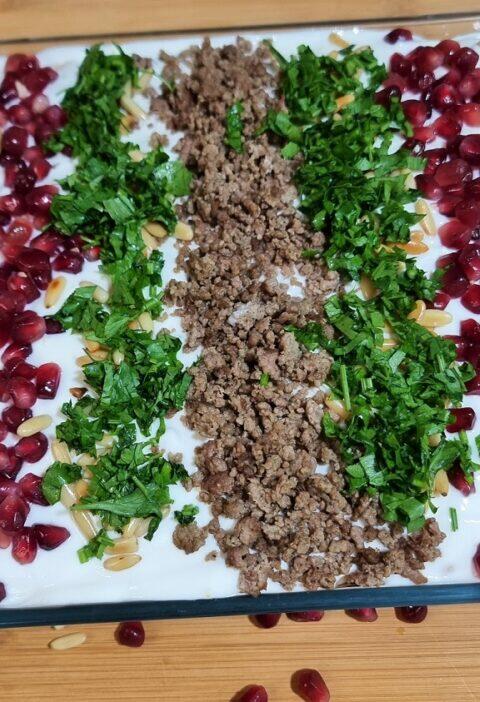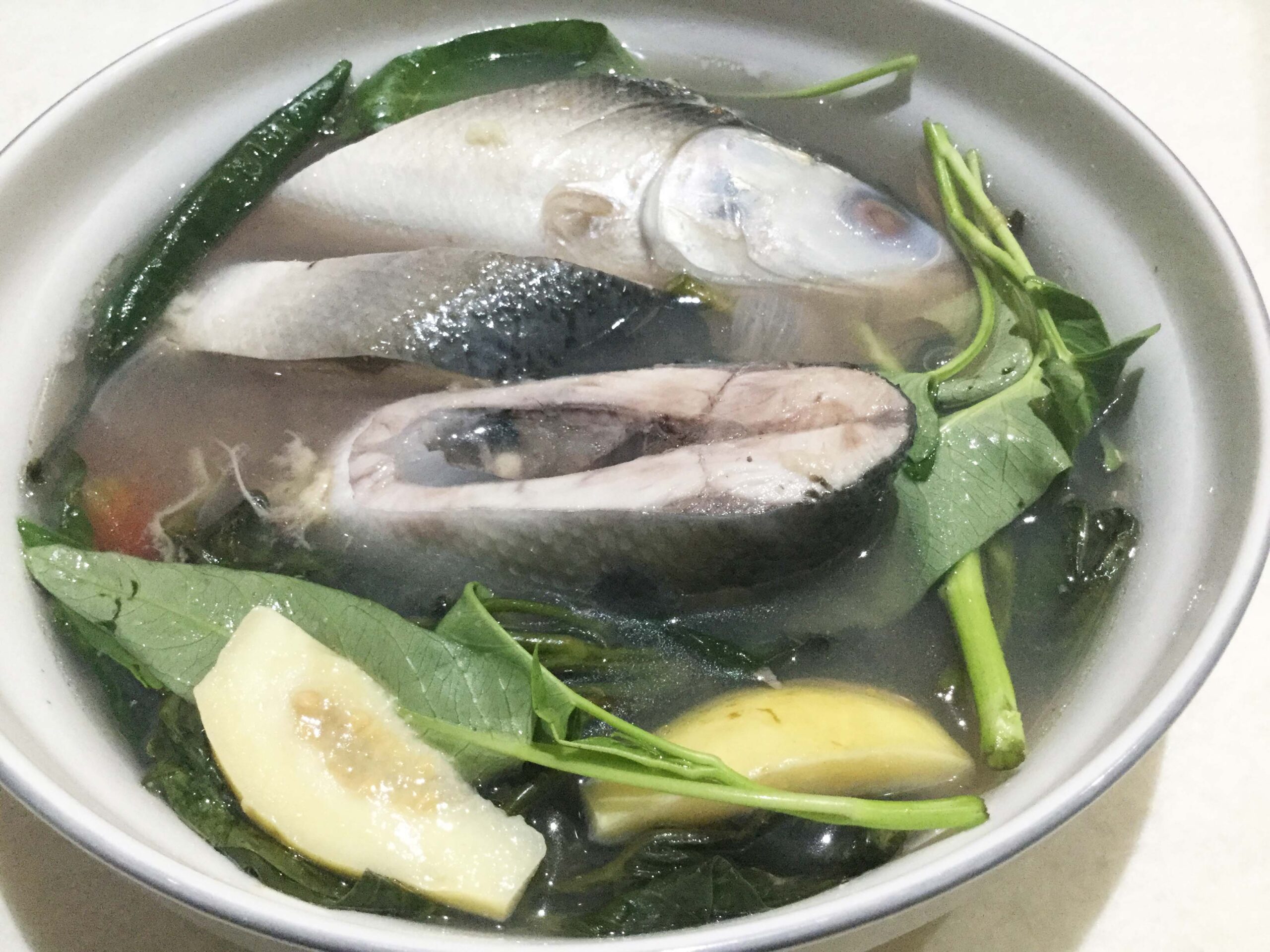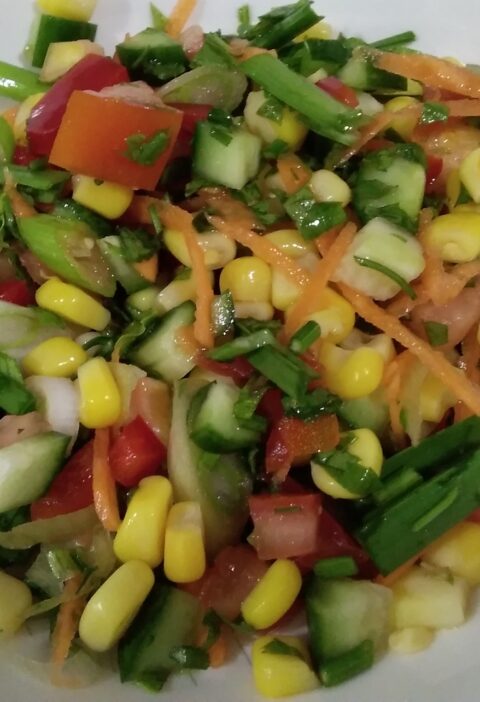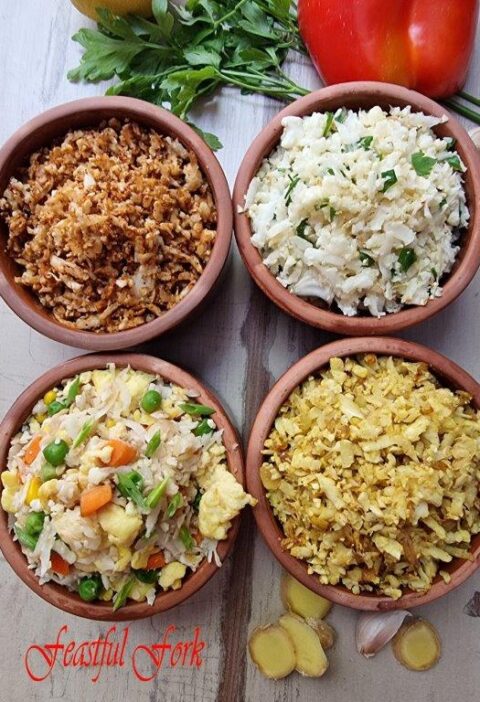If you’ve ever enjoyed a warm bowl of Pinakbet, you know it’s more than just food—it’s like a cozy hug in a dish. Originating from the Philippines, this flavorful vegetable medley is packed with history and tradition. Among the many Filipino vegetable dishes, pinakbet is probably the most popular, almost like the easy chop suey.
At its heart, Pinakbet is all about fresh, vibrant mixed vegetables and a unique flavor boost from shrimp paste. Over time, it has evolved into various versions—from the traditional Ilocano style to vegetarian spins—each telling its own story while sticking to the dish’s essence.
We are going to share with you here the recipe for pinakbet sa gata or pinakbet with coconut milk – one level up from the famous basic pinakbet recipe with just the addition of coconut milk.
A Little History of Pinakbet
Pinakbet, a classic Filipino vegetable stew, originated from the Ilocos region in the northern Philippines, where it has become a staple of local cuisine. This flavorful vegetable dish reflects the agricultural abundance of the area, incorporating fresh, regional ingredients like bitter melon, eggplant, and string beans.
Originally seasoned with “bagoong isda” Pinakbet is a true representation of Ilocano cooking, highlighting the region’s resourcefulness and focus on simple meals made from locally available produce. Its deep roots in the Ilocos region make it an iconic dish in Filipino culinary traditions.
Renditions, later on, varied depending on other regions that modified the recipe with the assortment of vegetables added to its original lineup. Through the years, it became more popular with the use of bagoong alamang or shrimp sauce. Despite that, pinakbet remains to be known as an Ilocano dish.
Ingredients of Pinakbet
What Vegetables Go in Pinakbet?
Pinakbet usually features a variety of vegetables you’ll often find in Filipino kitchens. Some common ingredients include:
- Bitter gourd or bitter melon (ampalaya)
- String beans
- Chinese eggplants
- String beans (also called yard-long beans)
These veggies are chosen for their contrasting textures and flavors, creating a balanced, savory dish.
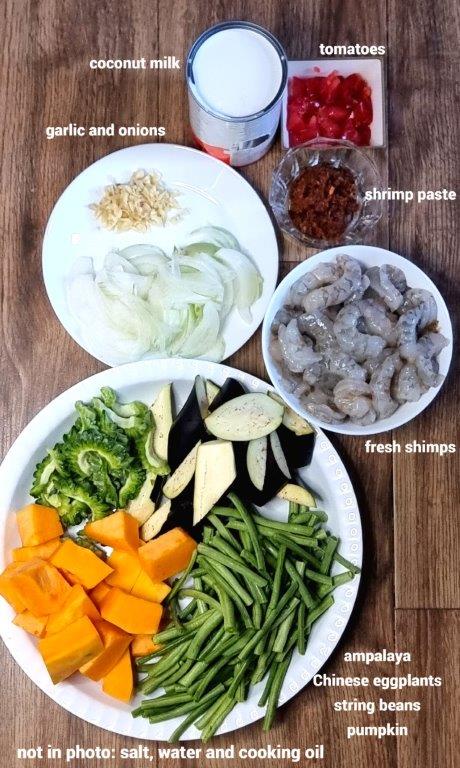
The Secret Ingredient: Shrimp Paste
Shrimp paste, or “bagoong alamang,” is one of the secrets of Pinakbet. It gives the dish that signature savory, umami flavor. With garlic, oil, and sometimes fish sauce, this paste enhances the dish’s overall taste and pairs perfectly with steamed white rice.
Variations of Pinakbet
Pinakbet has many different versions, each offering its twist on the original recipe.
Pinakbet Ilocano
The classic version of Ilocos often uses small salted fish instead of shrimp paste. It’s bold and authentic, using plenty of local veggies and simple cooking methods.
Vegetarian and Vegan Options
For those who prefer a plant-based version, you can skip the shrimp paste and fresh shrimp. Instead, you might use soy sauce or a vegan-friendly fish sauce substitute, with crispy tofu or mushrooms for texture.
Regional Twists
Across the Philippines, you’ll find regional variations that add meat like pork or seafood, adjust cooking methods, or even change the flavor profile to match local tastes.
Health Benefits of Pinakbet
Pinakbet isn’t just tasty—it’s healthy too! The veggies in Pinakbet, like bitter melon and eggplants, are rich in vitamins and antioxidants. These nutrients are great for heart health, digestion, and boosting your immune system.
Plus, the shrimp paste adds iodine and sodium, important for thyroid function and maintaining electrolyte balance. And because pinakbet is packed with fiber, it’s great for digestion and helps you feel full longer.
How to Customize Your Pinakbet
One of the best things about Pinakbet is how versatile it is. Here’s how you can tweak it to make it your own:
- Vegetables: Stick to traditional veggies like eggplant and string beans, or experiment with additions like squash or okra.
- Protein: Swap out shrimp for chicken, or tofu if you want a different texture.
- Seasoning: If the shrimp paste is too bold, use fish sauce or even a bit of soy sauce to dial it down.

Pinakbet with okra and zucchini
Whether you prefer your veggies with a crunch or a softer, stew-like consistency, you can easily adjust the cooking time to suit your preference. Serve your Pinakbet with steamed white rice to soak up all those delicious flavors!
Serving and Storing Pinakbet
Pinakbet is best served warm. It pairs beautifully with simple dishes like grilled fish, skewers, or roast chicken, and, of course, rice is a must!
If you have leftovers, here’s how to store them:
- In the fridge: Let it cool first, then store it in an airtight container. It’ll keep for three to four days.
- Freezing it: For longer storage, freeze Pinakbet in portion-sized containers. It can last up to two months. Just thaw it in the fridge overnight and reheat when you’re ready to enjoy it again.
Additional Cooking Tips
You may want to delete the use of salt and add extra fish sauce for a more concentrated umami flavor.
If your bagoong alamang is salty enough, you can also forego using salt.
You are not fond of fish sauce? No worries, adjust your bagoong alamang and/or salt.
Add zucchini, okra, or green beans to your vegetable lineup.
Ready to Try Pinakbet?
Pinakbet is a delightful Filipino dish that’s not only easy to make but also brimming with flavor and nutrients. Whether you’re sticking to the traditional recipe or putting your own spin on it, this vegetable stew is sure to become a favorite. So grab your ingredients, get cooking, and enjoy this delicious vegetable dish.
Print
Pinakbet: A Classic Filipino Recipe
- Prep Time: 15 minutes
- Cook Time: 20 minutes
- Total Time: 35 minutes
- Yield: 6 servings 1x
- Category: Main dish
- Method: cooking
- Cuisine: Filipino
Description
Pinakbet is a delightful Filipino dish that is brimming with flavor and nutrients. The traditional recipe here is made more delicious by coconut milk. So grab your ingredients, get cooking, and enjoy this delicious vegetable dish.
Ingredients
200g fresh shrimp, peeled and deveined
3 tbsp shrimp paste
4 cloves garlic, minced
1 medium-sized white onion, sliced
1 medium-sized tomato, chopped
4 tbsps cooking oil
200g string beans, cut into 3-inch pieces
200g pumpkin, cut roughly
150g Chinese eggplants, cut diagonally
100g bitter gourd, sliced
salt to taste
1 tbsp fish sauce
2 cups coconut milk
1/2 cup water (to be used sparingly)
Instructions
Sautee garlic and onions in cooking oil over medium-high heat and cook until onions are tender.
Add shrimps and cook until pinkish in color. Remove the shrimp from the pan and set aside.
Lower heat to medium, then add shrimp paste and cook while stirring for a minute.
Add tomatoes and cook until the tomatoes are broken down.
Add the vegetables and simmer over medium heat until tender, about 15-20 minutes. Note that you can add the vegetables separately depending on which ones cook longer, i.e., pumpkin first, then the eggplants, followed by string beans and ampalaya (bitter gourd). Add water at this stage if you feel the water content from the vegetables is not enough.
Pour coconut milk into the vegetable mixture. Season with salt and fish sauce, and continue to simmer for an additional 3 minutes.
Add shrimp, then turn once.
Turn off the heat. Transfer onto a serving dish.
Your pinakbet with coconut milk is ready to serve.

